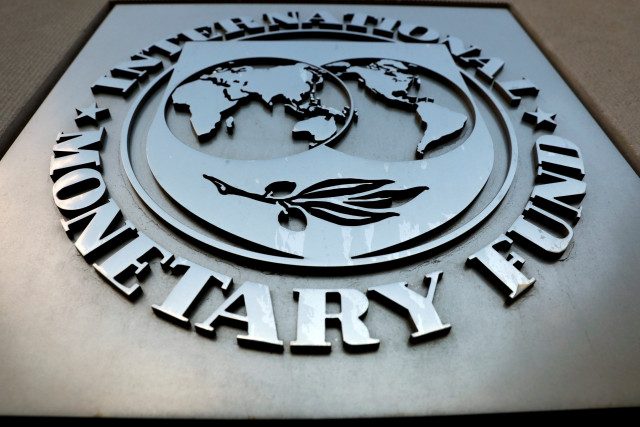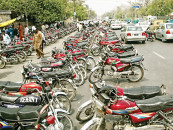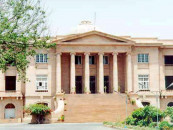IMF projects inflation rate to hit 14% by June
Interest rates may also peak to 15%, drastically slowing down economy

Lender says potential gains from better asset management are considerable. PHOTO: REUTERS
Such a high level inflation would also carry implications for Prime Minister Imran Khan’s most ambitious flagship programme of constructing five-million low-cost housing units. The banks lend money over and above the policy rate, which will reduce the government’s options to give subsidy on housing loans.
The sources said due to stabilisation measures, the IMF is also projecting economic growth rate of below 3% for fiscal year 2018-19. These assessments were shared with Pakistan during September 27 to October 4 staff level visit.
Although the IMF has not mentioned the inflation projections in its handout, it did internally share the assessment of average 14% inflation in fiscal year 2018-19 with the Finance Ministry, said sources who negotiated with the IMF.
The issue of inflation and the Gross Domestic Product (GDP) also came up for discussions during the closing meeting between Finance Minister Asad Umar and IMF team. The meeting was held in Q-Block on last Thursday. In its handout issued on the same day, the IMF underlined that “economic growth will likely slow significantly, and inflation will rise”.
IMF projects inflation rate to hit 14% by June
The average inflation in the first quarter of this fiscal year was 5.86%, according to the Pakistan Bureau of Statistics (PBS). The Sensitive Price Index-based inflation has already jumped to 6.5% this week over the same time of the last year, according to the PBS. The State Bank of Pakistan (SBP) has also raised its average inflation projection to 8% but it is still far lower than the IMF’s assessment.
The sources said the IMF’s assessment of average 14% inflation was based on at least four assumptions. These were increase in prices of gas (already notified up to 143%), increase in power tariffs, devaluation of rupee against the US dollar that will affect almost every consumable item and increase in prices of petroleum products due to devaluation and global crude oil prices.
“According to our model, the average inflation in the fiscal year 2018-19 will be between 13% and 15%,” said Dr Hafiz Pasha, former finance minister, while affirming the IMF’s assumptions for higher inflation.
IMF mission to arrive in coming weeks for bailout talks
Once the inflation hits the roof, it would be impossible for the SBP to keep the real interest rates negative. In such a scenario, the IMF would push Pakistan to hike the key interest rates to a level, which should be slightly higher than the inflation levels.
The IMF has already announced to send its team to Pakistan in the coming weeks after Finance Minister Asad Umar formally requested the IMF managing director for a bailout package.
The SBP has recently increased the interest rates to 8.5% - 2.75% increase since January this year. The sources said the IMF demanded 12.5% interest rate in the short term.
The IMF has long been advocating tight monetary and fiscal policies to cut the aggregate demand aimed at restoring macroeconomic stability in Pakistan. The country booked $18 billion current account deficit in the last fiscal year but its official foreign currency reserves are not sufficient to finance the deficit.
The SBP’s official foreign currency reserves decreased to $8.3 billion – hardly sufficient to give cover to 1.5 months imports. The month of November will be critical, as the authorities are expecting that the current account deficit will start narrowing down, imports will be drastically curtailed due to previous rounds of devaluation and the exports will pick up.
In case this does not happen, the SBP might be asked to take the interest rates to double digits and let the rupee further devalue. The sources said the due to the stabilisation measures the IMF has also projected economic growth rate of below 3% as against 5.8% in the last fiscal year.
A senior official of the Finance Ministry, who was also involved in negotiations with the IMF, said Pakistan did not agree to the IMF’s assessment of 14% inflation and below 3% economic growth rate.
But Dr Pasha said in addition to stabilisation measures, the output of major crops would be a determining factor in estimating economic growth rate. He said if the major crops output dipped, the economic growth rate will be in the range of 3.2% to 3.5%. “If the agriculture sector performs well, the economic growth rate could be around 4.2%,” said Dr Pasha.
The IMF’s latest World Economic Outlook report said the macroeconomic stability gains in Pakistan have been eroding, putting the outlook at risk. The economic growth rate is expected to moderate to 4% in 2019, and slow to about 3% by 2023.
This suggests that Pakistan’s economic conditions will remain precarious for years to come, contrary to the PM’s promise with the nation that he would overpower the situation in six months.



















COMMENTS
Comments are moderated and generally will be posted if they are on-topic and not abusive.
For more information, please see our Comments FAQ